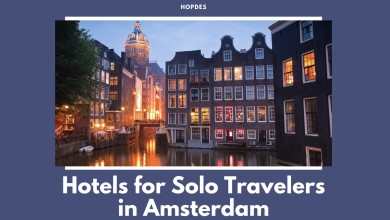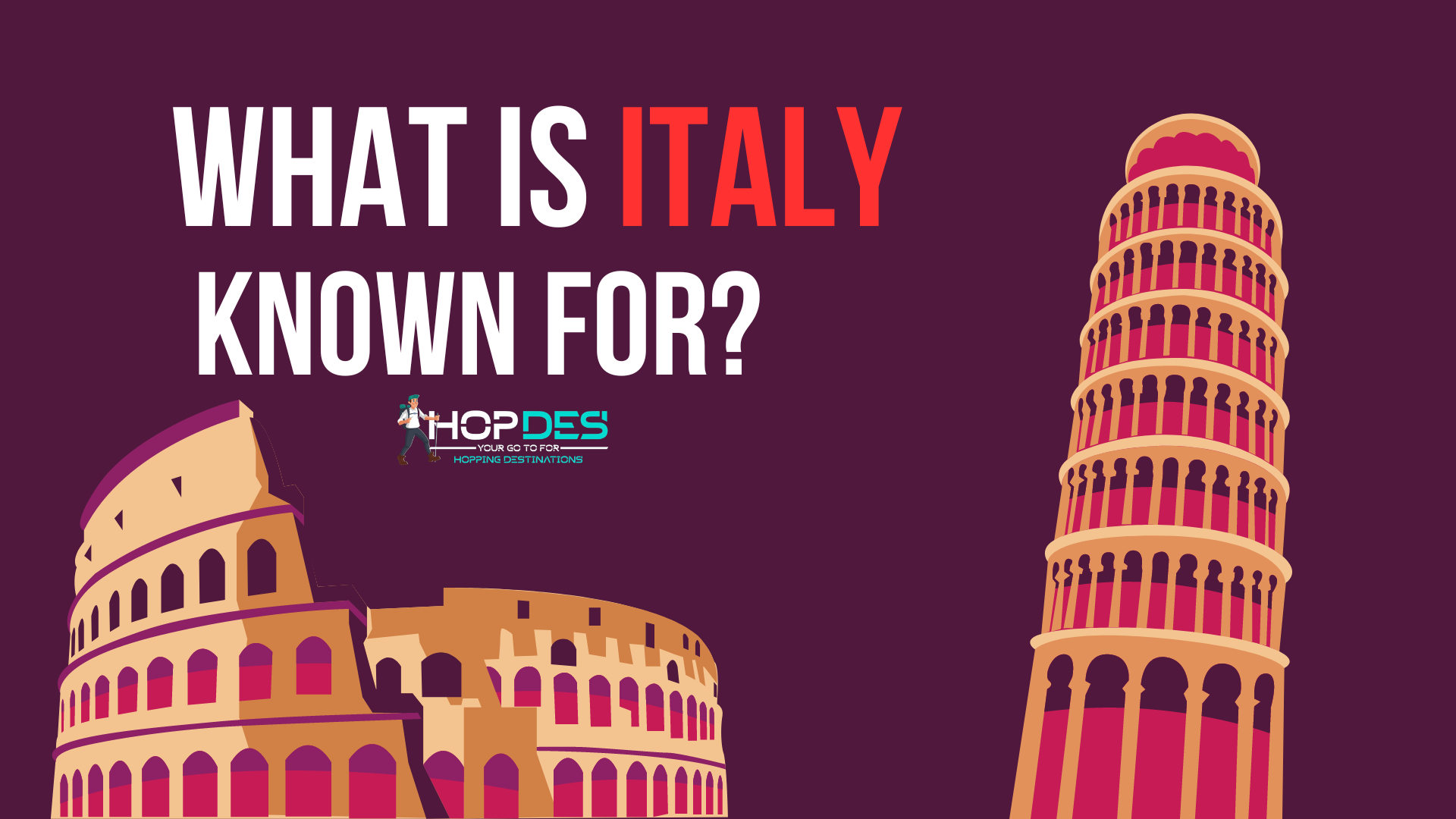
Italy is known for its remarkable architectural structures, delectable Italian gastronomy, aesthetic villages, prominent urban centers, significant historical sites, and famous Italian artists. When the name “Italy” is used, one would readily associate it with culinary delights such as pasta and gelato, iconic modes of transportation like Vespa, and the quintessential experience of a gondola ride.
However, it is important to recognize that Italy encompasses a wealth of other cultural and natural treasures beyond these popularized elements.
Let’s go into the famous aspects for which Italy is well recognized. One will get more than a mere glimpse of this exquisite nation but rather develop a profound appreciation for its many qualities and attributes.
Interesting Read: Does It Snow in Italy?
Italy is Famous For Cities and Places
Let’s start off with the cities Italy is known for!
Rome
Rome, a city of historical significance, is well recognized for its role as the capital of the Roman Empire. Dating back to the year 753 B.C., according to tradition, Romulus and Remus, who were twin sons of Mars, the deity associated with warfare, were saved from peril when a female wolf took them under her care after their abandonment in the Tiber River. Subsequently, the siblings proceeded to establish a settlement along the shores of the river.
Romulus proceeded to perpetrate fratricide, therefore assuming the role of the inaugural monarch of Rome, which was called after his person. The first legislation of the Roman Empire was established in 450 B.C.
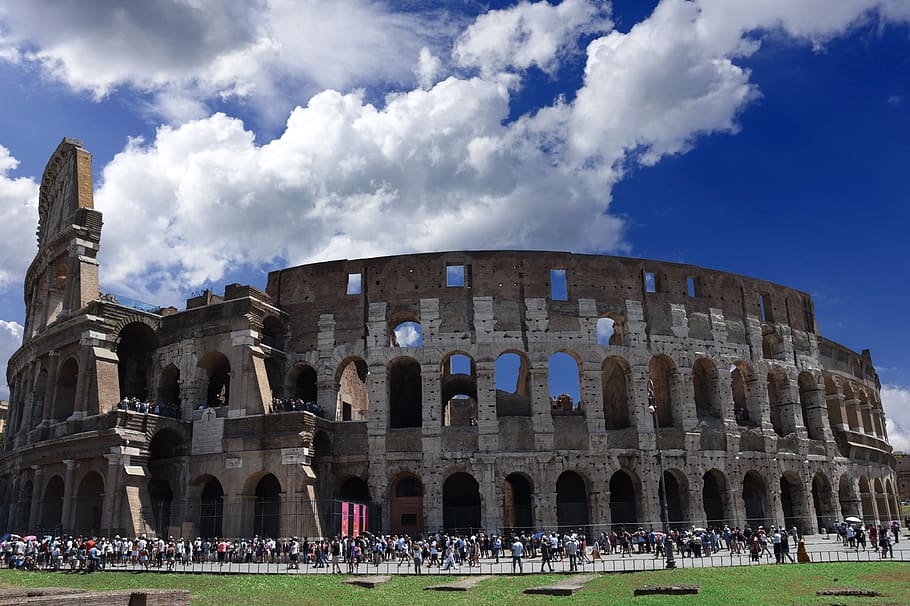
Presently, Rome serves as the political and administrative center of Italy, assuming the role of the nation’s capital city. It’s home to iconic landmarks such as the Colosseum, Roman Forum, Pantheon, and Vatican City, which houses St. Peter’s Basilica and the Sistine Chapel.
The city’s charisma extends to its vibrant modern life, where trattorias serve mouthwatering Roman cuisine and piazzas buzz with the energy of everyday Roman life. In every corner, Rome’s layers of history, art, and culture converge, creating a city that remains an eternal beacon of human achievement and splendor.
Suggested Reading: Worst Time to Visit Rome, Italy – Avoid These Months!
Venice
One distinguishing architectural characteristic of the city of Venice in Italy is its complete construction above the water. Italy and Venice evoke images of picturesque canals adorned with gondolas, colorful Venetian masks, and awe-inspiring architectural marvels in the minds of many individuals.
The globally renowned gondola rides in Venice are mostly accountable for the city’s widespread recognition and its several popular epithets, including “The Floating City” and “The City of Canals“. The popularity of Venice as a tourist destination may be attributed, in part, to the opportunity it offers for visitors to go on a romantic gondola ride.
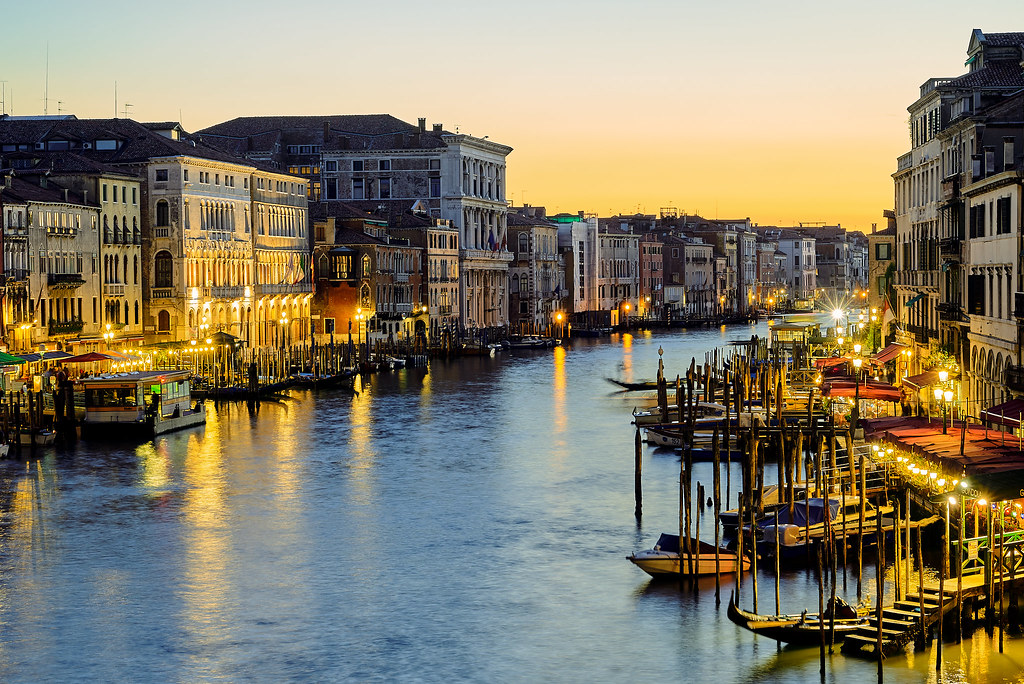
The allure of the city stems from its collection of ancient bridges with a rich history spanning many centuries, its aesthetically pleasing architecture, and its well-conserved medieval buildings.
This unique city is also renowned for beautiful architecture. St. Mark’s Square and Basilica, the Grand Canal, and the Rialto Bridge are among its most famous attractions. Venice is also celebrated for its art, including the Biennale contemporary art exhibition. The city’s buildings seem to emerge directly from the water, creating a surreal and enchanting atmosphere.
Venetian cuisine is characterized by its seafood dishes, including fresh catches from the surrounding lagoon. Dishes like risotto with squid ink, “sarde in saor” (marinated sardines), and “fritto misto” (mixed fried seafood) offer a taste of the city’s culinary heritage.
Must Read: 10 Wonderful Places to Visit in Venice – Italy
Milan
Milan is often referred to as the “Global Epicenter of Fashion” by many individuals. The success of Milanese fashion brands like Versace, Fendi, and Gucci contributed significantly to Italy’s rise to prominence as a fashion powerhouse. Dolce & Gabbana, Armani, and Prada are just a few of the famous fashion businesses that call Milan, the fashion center of the world, home.
The “Quadrilatero della Moda” represents the epitome of exclusivity in Milan, serving as a prominent retail district that accommodates the most renowned fashion businesses and stores. The high-priced merchandise available in the retail area has gained international recognition. Milan Fashion Week typically attains a position inside the top quartile when considering global fashion events.
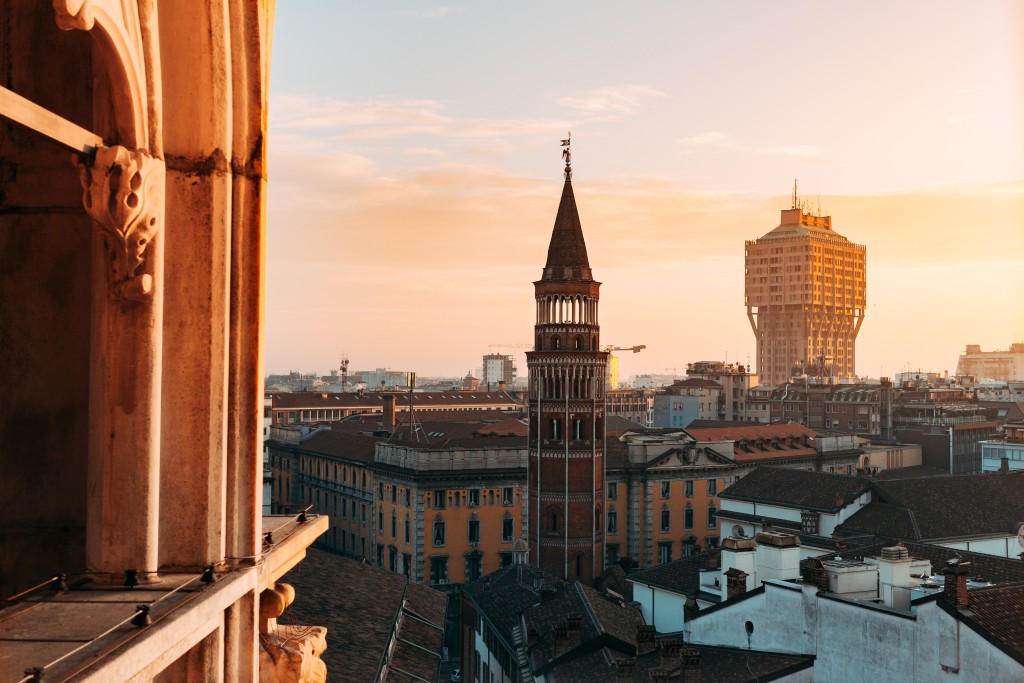
Within the realm of fashion shows, it occupies a position of high esteem owing to its renowned runway presentations and its capacity to attract prominent figures from the fashion industry.
In addition to its prominent status as a fashion industry hub, Milan has a profound cultural heritage. One can consider making a brief stop at the “Santa Maria Delle Grazie Church” en route to the Leonardo da Vinci Museum to get a view of the renowned masterpiece, The Last Supper, made by the esteemed artist Leonardo da Vinci.
On top of that, Milan is a major financial hub in Europe, hosting the Italian stock exchange and serving as the headquarters for many national and international businesses. It’s a city of modernity and innovation, driving Italy’s economic growth.
Florence
Florence, the capital city of the Tuscany region in Italy, is famous for its cultural and aesthetic significance. It has a plethora of creative and architectural masterpieces from the Renaissance period.
The Duomo has a significant position as a major architectural icon within the city, garnering great respect for its construction and design. The features of the structure include a dome adorned with terracotta tiles, which was designed by Brunelleschi, as well as a bell tower created by Giotto.

The famous sculpture, often referred to as “David,” was created by the distinguished artist Michelangelo and is now shown at the “Galleria dell’Accademia“. This masterpiece is widely recognized as one of the most acclaimed pieces of art worldwide.
The Uffizi Gallery is home to many famous creative treasures, like Botticelli’s famed work “The Birth of Venus” and Leonardo da Vinci’s notable piece “Annunciation.” Raphael, Michelangelo, Leonardo da Vinci, Sandro Botticelli, Giotto, and Titian comprise a distinguished cohort of esteemed painters whose creative works draw a substantial number of people to the city of Florence every year.
Tuscan cuisine shines in Florence with dishes like “ribollita” (a hearty vegetable soup), “bistecca alla fiorentina” (Florentine steak), and pappa al pomodoro (tomato and bread soup). The Mercato Centrale is a vibrant food market where visitors can sample local products.
Besides, Florence’s influence extended beyond art and architecture. The city played a significant role in the development of the Italian language and was home to renowned writers like Dante Alighieri and Petrarch.
Related: The Best Known Hotels and Resorts in Florence – Italy
Italy is known for its Landmarks
Italian Landmarks are known all over the world and have made Italy one of the most popular tourist destinations for honeymooners! Let’s find out more about what landmarks make Italy popular.
Leaning Tower of Pisa
The Leaning Tower of Pisa stands as a remarkable architectural wonder from medieval Europe. The height of the Leaning Tower of Pisa is around 60 meters, and its original construction aimed to achieve a vertical orientation.
The most obvious reason for the tower’s fame is its distinctive tilt. The tower began leaning shortly after construction due to the soft soil on which it was built. This unintended inclination immediately caught people’s attention and has been a source of fascination ever since.
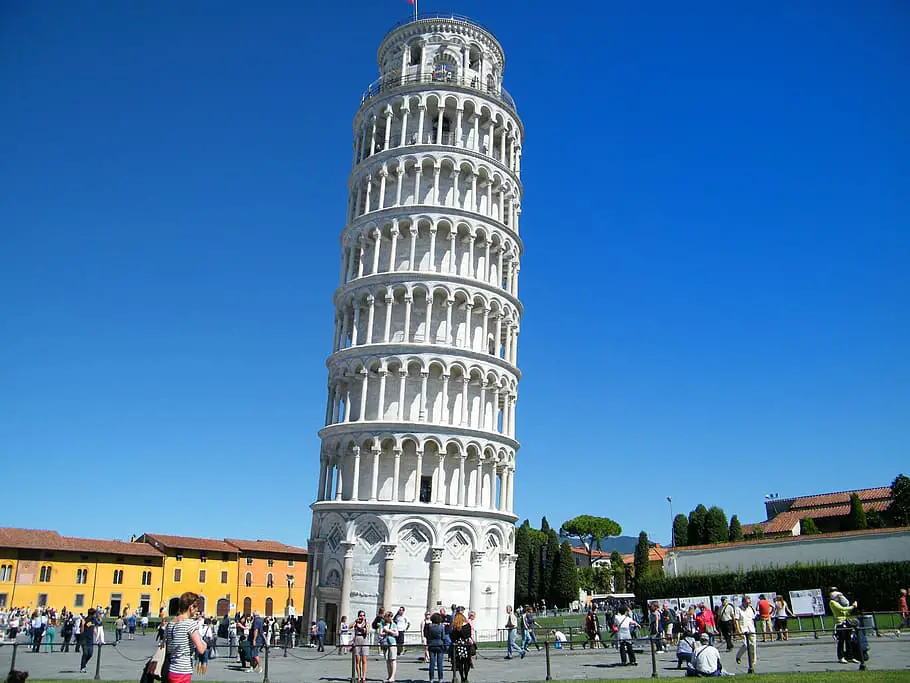
During the construction process, a state of instability was observed at the foundational level of the structure, resulting in a noticeable inclination. The structure, as its name implies, has a noticeable inclination of around 5.5 degrees toward the southern direction. Despite its lean, the tower has managed to stand for over 800 years.
Steel cables are affixed to aid in the maintenance of its place. It is deemed safe to visit the Leaning Tower of Pisa. The area is populated by visitors who are visiting the landmark and partaking in a pleasant outdoor meal.
The Leaning Tower of Pisa has become an iconic representation of Italy and is recognizable to people worldwide. It features in countless photographs, postcards, and travel imagery.
The Colosseum
The Colosseum, situated in Rome, Italy, near the Roman Forum, is an elliptical amphitheater. The Colosseum is the largest ancient amphitheater ever built and, despite its significant age, now retains the title of the largest surviving amphitheater worldwide.
Throughout its historical evolution, the facility could host a varying number of individuals, ranging from around 50,000 to 80,000 people. On average, the arena attracted roughly 65,000 spectators. The Colosseum served as a venue for many events, including gladiatorial contests, public spectacles involving animal hunts and executions, re-enactments of notable wars, dramatic performances based on Roman mythology, and even simulated naval battles.

Over time, the structure underwent many adaptations to serve as residential dwellings, artisan workshops, accommodation for religious orders, a fortified fortress, as well as a quarry and a place of Christian pilgrimage.
The Colosseum is a prominent landmark in Italy that garners significant attention, drawing over six million tourists annually. It is not only a historic site but also a testament to the enduring allure of ancient architecture and human creativity.
The Pantheon
The Pantheon is an architecturally impressive structure constructed between the years 126 to 128 AD, under the reign of Emperor Hadrian. The structure has a substantial reinforced concrete dome. The Pantheon stands as a testament to the exceptional skill and ingenuity of the architect or engineer responsible for its construction.
The dome serves as a captivating focal point of the structure, and its construction methods used by the ancient Romans remain an enigma. Even after the passage of two millennia, The Pantheon remains standing, its dome remarkably preserved, surpassing any contemporary structures in architectural grandeur.

The function of the Pantheon is still shrouded in mystery. The term “Pantheon” originally denoted the concept of “all gods.” The initial function of the Pantheon was the display of divine sculptures; however, there is uncertainty among historians over whether the Pantheon served as a religious edifice, such as a church or temple.
This further enhances the renown of The Pantheon, rendering it imperative to behold this remarkable architectural edifice throughout one’s travel to Italy. The Pantheon’s influence reverberates across history and culture.
Architects and builders through the ages have drawn inspiration from its harmonious proportions and innovative engineering. The likes of Michelangelo and Brunelleschi found inspiration in its design, and its impact can be seen in structures spanning continents and centuries.
Trevi Fountain
The Trevi Fountain in Italy is widely regarded as a stunning architectural masterpiece. According to Italian cultural beliefs, the act of tossing three coins into the Trevi Fountain is thought to provide three outcomes. Firstly, you will visit Rome again. Second, you will find your true love. Third, you will get married.
The construction of the Trevi Fountain took place in 1732 under the supervision of Nicola Salvi, who emerged as the winner of a design competition held to replace a previously dismantled fountain located in the Palazzo Poli. The name of the fountain derives from its geographical placement inside the Trevi area.
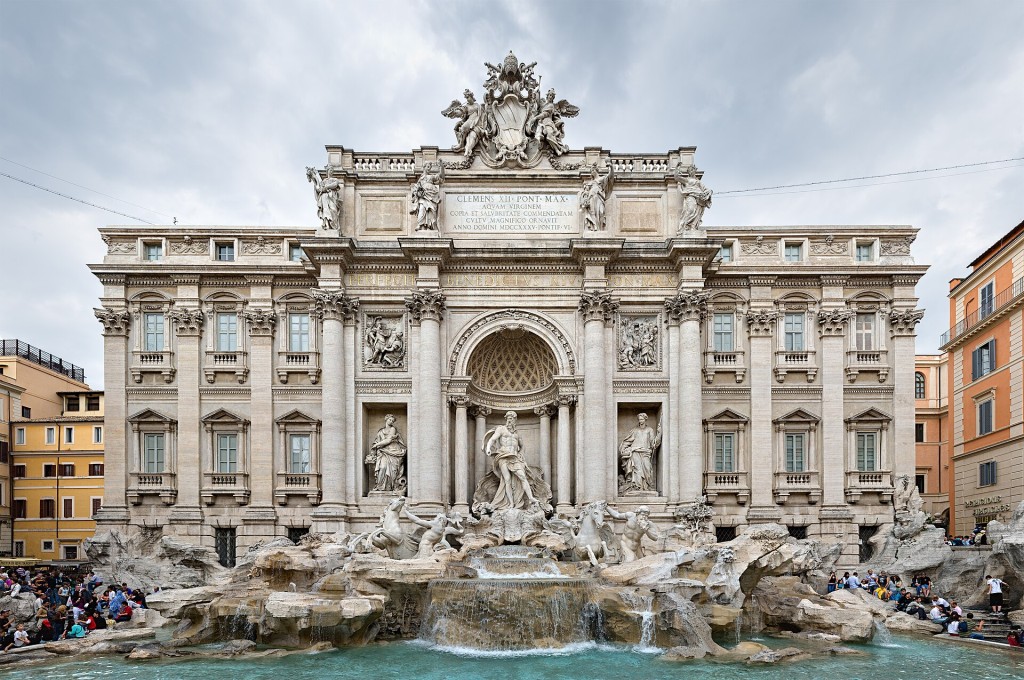
The dimensions of the fountain are 26 meters in height and 49 meters in width, making it the most expansive Baroque fountain in the city. The sculpture portrays the act of Taming the Waters, crafted meticulously from Carrara marble sourced from Italy, exhibiting a white hue.
Suggested Reading: Top 10 Hotels in Positano Italy With A Scenic View
Italy is Known for Food
Culinary delights and food are Italy’s one awesome culinary love letter to the world. From the rolling hills of Tuscany to the bustling markets of Sicily, Italy’s gastronomic tapestry is a vibrant mosaic of flavors, traditions, and passion.
Pizza
Most people are aware that pizza originated in Italy. Pizza was first created in Naples, thus the name “Neopolitan.” It is a thin-crust, spherical pizza that is loaded with tomato sauce, fresh mozzarella, and basil. The pizza was supposedly made in honor of Queen Margherita of Savoy.
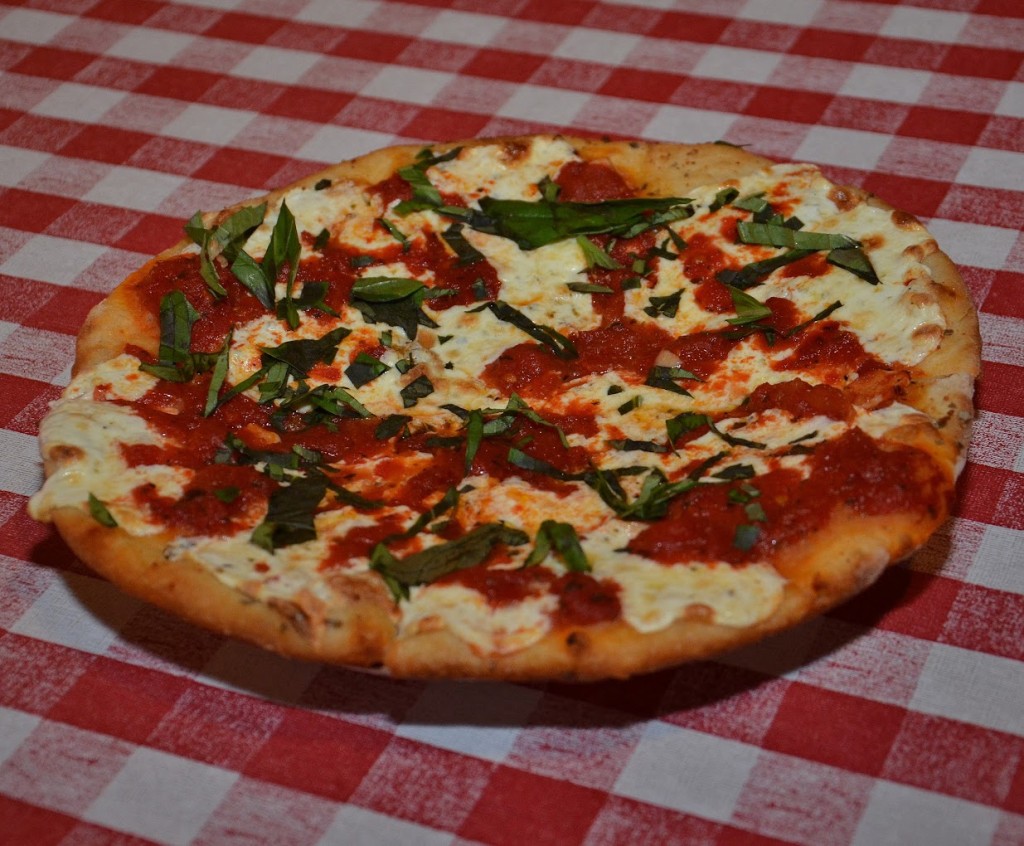
Different regions of Italy have somewhat different pizza tastes. For instance, Neopolitan pizza is known for its round, flat, and thin crust.
When compared to this, Pizza Siciliana is characterized by its thick, airy crust, tomato sauce, sheep’s milk cheese, anchovies, and breadcrumbs. The Pizza Viennese has Vienna sausage, mozzarella cheese, and marinara sauce.
Editor’s Pick: Insiders Guide To The Best Pizza in Dubai
Pasta
Pasta, or noodles served with a sauce, is a staple in many cuisines across the world. Pasta is created in a variety of methods, but its Italian origins can be traced back to the rolling out of dough including durum wheat flour, eggs, and water.
Common forms of pasta include spaghetti, which is long and thin, round noodles, and penne, which are short, hollow tubes. Ravioli is another option; these are pillows of thin dough stuffed with delicious things like ricotta cheese, pumpkin, or slow-cooked beef.
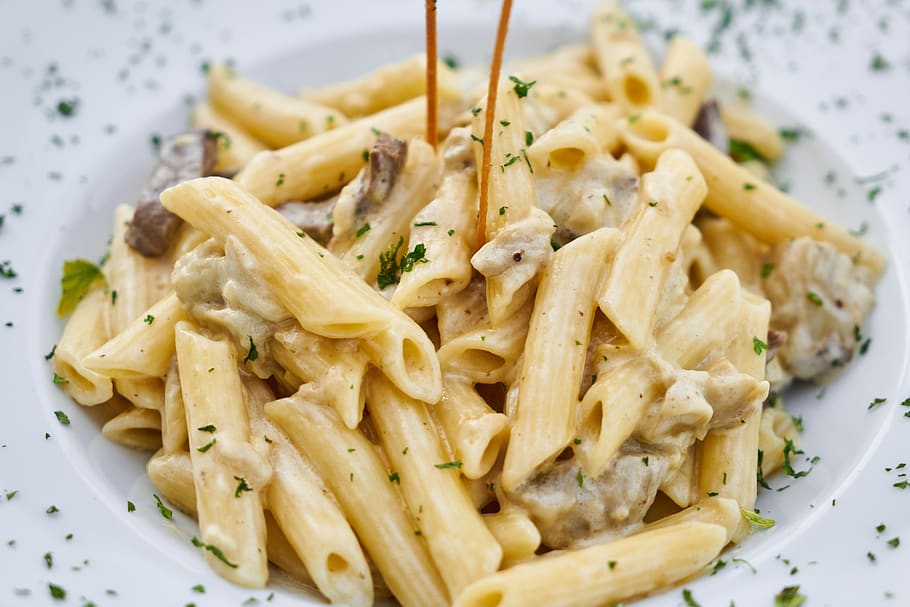
Pasta is universally known because it is prepared in a wide variety of ways, served with a wide variety of sauces, and loaded down with cheese.
Marco Polo, a Venetian trader, is said to have brought it from his travels in Asia, but some argue that the Etruscans of ancient Italy prepared a similar delicacy, showing that it is an Italian meal. But it is common knowledge that Italy is the only place to get the real deal when it comes to pasta.
Truffles
Italy’s culinary legacy extends well beyond the ubiquitous pizza and pasta. Truffles are delicious, tree-grown fungi that are eaten. We are not saying that truffles can only be found in Italy, but we are saying that there are many of them in certain parts of the country. The colors of Italian truffles are used to categorize them. Black truffles are more accessible, more affordable, and have a more subtle taste.

White truffles from Italy, on the other hand, are pale yet packed with taste. White truffles are more costly than black truffles because they are more difficult to locate.
Gelato
Italy is well-known for many things, and gelato is one of them. Gelato, Italy’s classic ice cream is a popular frozen dessert that can be found throughout the country. This thick and creamy ice cream has been a staple in Italy since at least the 17th century.
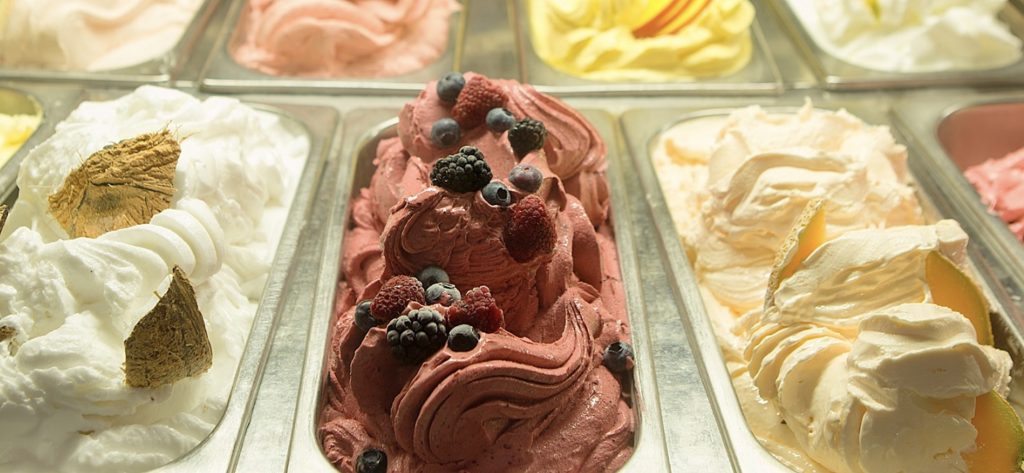
Pistachio, hazelnut, and “stracciatella” (simple milk with chocolate shavings) are three classic flavors. It is one of the many things that have made Italy renowned. Gelato is softer and lower in fat than traditional ice cream.
Smaller gelato stores with fewer flavor options are the norm because of the artisanal nature of gelato production; typically prepared daily.
Italian Cheese
Cheese, with its origins tracing back to the Roman Empire, has played a significant role in Italian culture, catalyzing the global exportation and assimilation of this dairy product. Italy has a wide array of cheese varieties and maintains a rich and enduring tradition in the craft of cheese production, rendering it one of the most ancient and esteemed cheese-making nations worldwide.

The origins of cheese within the country is traced back to the Roman civilization, which exhibited a strong affinity for cheese and played a significant role in its dissemination across their empire, including regions such as France and Britain.
Italy has a diverse array of dairy enterprises, with a considerable number exceeding 400. In this particular context, it is possible to create an extensive catalog of Italian cheeses, including well-known types such as Parmesan, Mozzarella, Ricotta, Gorgonzola, and Mascarpone, with the purpose of individual investigation and consumption.
Italian Wine
Italy is renowned for its production of wine. The nation has several wine areas with a rich history. Italians have a predilection for consuming wine in conjunction with their meals.

The production of wine in Italy is a significant sector of the country’s economy. The prominent position of Italy in the wine industry is ascribed to its wide vineyard coverage, which spans over 1.7 million acres, as well as its diverse collection of grape varietals, which amount to several hundred. Tuscany, Veneto, and Piedmont are recognized as significant regions for wine production within Italy.
Individuals with a keen interest in expanding their knowledge of Italian wine have the opportunity to engage in wine-tasting excursions readily available at several vineyards.
Coffee
Italians possess a profound adoration and profound reverence for coffee. The act of consuming coffee has a significant cultural significance for individuals, hence it is logical to possess a certain level of knowledge about Italian coffee.
Espresso is a concentrated serving of robust black coffee that is often taken during the evening hours, generally after the main meal of the day, which is served in a charmingly little cup.

A cappuccino is a coffee that consists of espresso combined with milk that has been frothed to create a creamy texture. It is only taken before 11 a.m. A macchiato consists of espresso and milk. This is a common morning beverage for Italians.
The consumption patterns of coffee among Italians are characterized by a preference for certain coffee varieties throughout distinct periods of the day. While other countries can have cappuccino throughout the day and night, Italians traditionally limit their consumption of this beverage to the early hours
Italy is Famous for Vehicles
Vehicles? It may sound odd but vehicles from Italy are also quite popular all over the globe. From the sleek elegance of iconic sports cars like Ferrari, Lamborghini, and Maserati, to the charming practicality of Vespa scooters and the enduring appeal of classic Fiat automobiles, Italy’s automotive prowess is a testament to both engineering excellence and aesthetic sophistication.
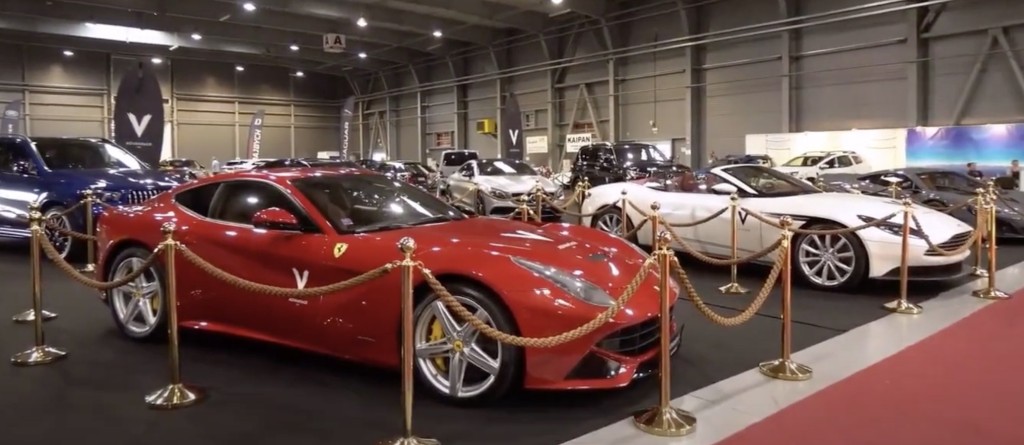
Vespa
The little motorized scooter known as the Vespa has gained worldwide fame and is now among Italy’s most recognizable exports. Romanticized in ads depicting scenic drives along the Italian Riviera and popularized by films like Roman Holiday (1953) and La Dolce Vita (1960), the Vespa is an excellent mode of transportation in congested urban areas like Rome.
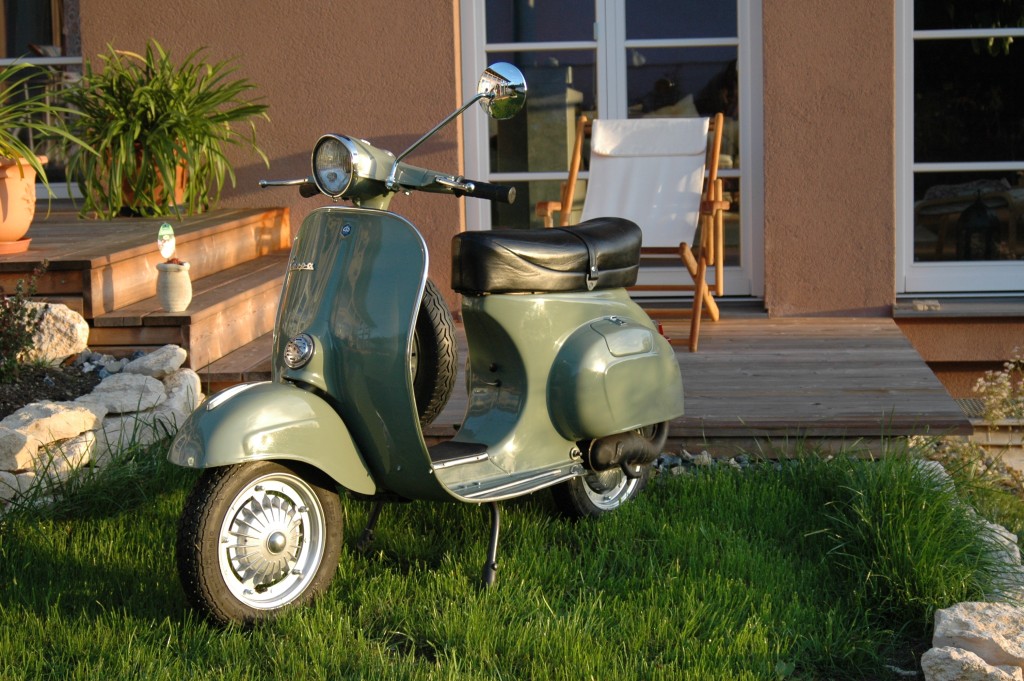
The name Vespa, which translates to “wasp” in Italian, conjures up images of a buzzing machine that darts between parked automobiles. Piaggio & Co. began production in 1946 in Pontedera, Italy. Over 34 different Vespa models have been produced in the last 75 years, with millions sold annually throughout the globe.
Cars
Italy has a rich automotive heritage that dates back to the early 20th century. Brands like Alfa Romeo, founded in 1910, and Fiat, established in 1899, have deep roots that intertwine with the evolution of the automobile itself. This legacy adds a layer of authenticity and history to Italian car brands.
When it comes to sports cars, Italy is a household name. Luxury and opulent supercars like this do not come cheap. In Italy, a sports vehicle is a significant prestige symbol; therefore owning one is a big deal.
Furthermore, Italian innovators are responsible for the world’s best-selling sports automobiles. Italy has a plethora of remarkable sports automobiles, including renowned brands like Ferrari, Lamborghini, Maserati, and Bugatti.
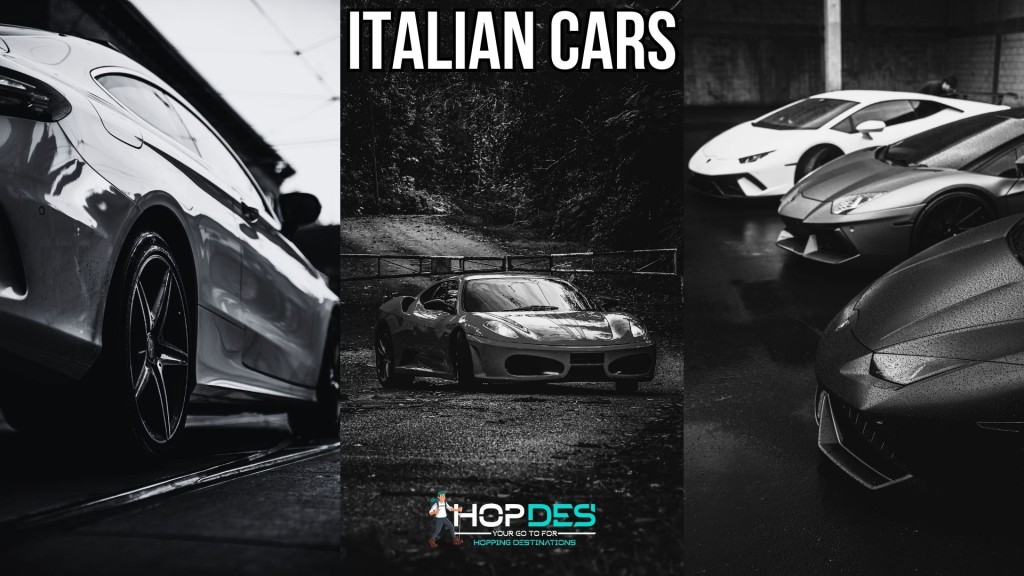
All three prestigious sports car manufacturers are located in Modena, with a travel time of no more than 15 minutes between their respective offices. The city has acquired the designation of the “International Capital of Sports Cars” due to its prominent role in the production and global distribution of almost one-third of the world’s sports cars.
It is not only flashy sports cars that come to mind when you think of Italy; inexpensive and well-made brands like Alfa Romeo and Fiat also fit the description. Besides, Italian car manufacturers have excelled in motorsport, particularly in Formula One racing. Brands like Ferrari have a storied history in racing, and their motorsport success translates into increased brand recognition and appeal.
Italy’s Popular Art and Culture
Italy’s art and culture are like a treasure chest of beautiful things that people from all around the world love. The way Italians talk with their hands and the colorful festivals they celebrate show how lively and joyful their culture is. Italy’s art, history, food, and lively spirit make it a popular place that people want to visit and learn about from all corners of the globe.
Renaissance Art
The post-medieval era in Europe saw a notable resurgence in the appreciation and study of the intellectual and cultural traditions of ancient Greece and Rome. The Renaissance is a commonly used term to describe the historical period that occurred during the 14th and 16th centuries.

Italy, specifically, achieved significant advancements in the fields of philosophy, literature, and particularly art. Michelangelo, Leonardo da Vinci, and Raphael were just a few of the famous artists of the time who made significant contributions to the visual arts and the decorative arts.
The Renaissance wasn’t just about art; it was also a time when people started to think more about science, learning, and how to improve the world around them. So, when we talk about Renaissance art, we’re talking about a special time when creativity, skill, and new ideas came together to make the world more beautiful and exciting.
Opera
Italy has a robust musical heritage and is renowned, particularly for its bel canto style of opera. Opera is widely regarded as a venerable cultural heritage in Italy, characterized by the prominent contributions of acclaimed Italian opera composers such as Puccini, Verdi, and Rossini, among others.

Italy is home to many renowned opera houses and theaters, including La Scala in Milan and the Arena di Verona. These establishments have gained significant recognition and are well-acknowledged for their cultural significance and artistic excellence. Italian is the language of choice for several operas, regardless of their settings, as seen in works like La Bohème and Madame Butterfly.
Hand Gestures
It is well recognized that Italians possess a distinctive communication style characterized by the prominent use of hand gestures. Certain hand motions are considered integral to the Italian lexicon.

Italians are often subject to ridicule for this particular characteristic; however, it is noteworthy that they exhibit a high level of efficiency. Gesticulating with distinctive hand movements and gestures during conversation is a characteristic feature of Italian speech, whereby each gesture has a distinct meaning. The practice of using a mix of verbal communication and manual gestures is believed to have its roots in ancient Roman civilization.
This method allowed individuals to effectively convey their thoughts and emotions comprehensively. In contemporary Italian culture, a significant portion of hand gestures used by individuals is intended to convey negative sentiments, reflecting their discontentment or irritation.
Italy is Home to Important Personalities
Many popular personalities have emerged from Italy. Each one of them has somewhat contributed to the culture and popularity of Italy.
Marco Polo
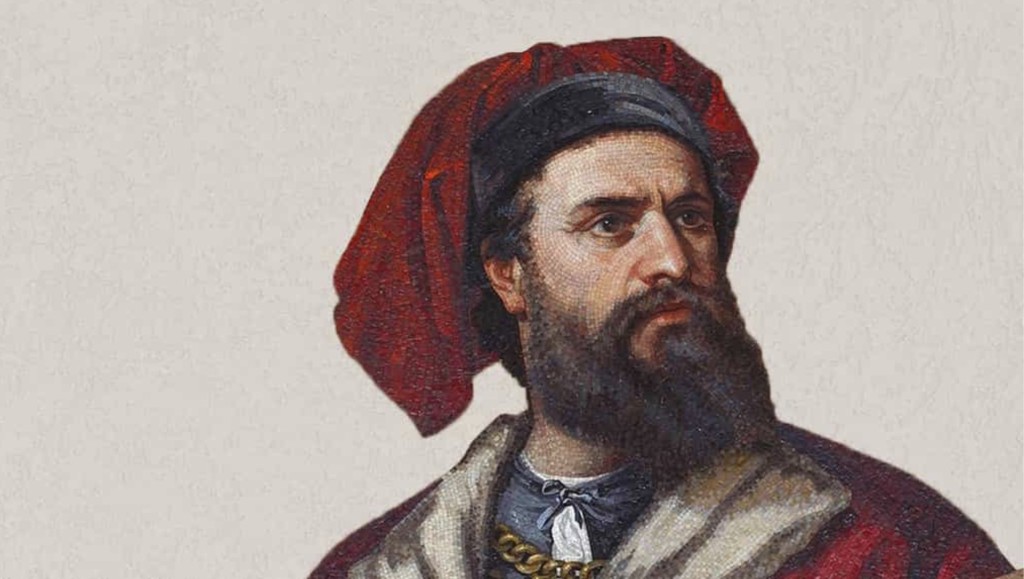
Marco Polo, a renowned Venetian explorer, and trader, undertook extensive voyages across Europe and Asia. The European perception of the Eastern world was influenced by the investigations conducted by him in Asia. Moreover, he functioned as a catalyst for other Italian explorers, such as Christopher Columbus, who undertook their expeditions.
Julius Caesar
Julius Caesar was a famous Roman general, statesman, and dictator who played a crucial role in the transformation of the Roman Republic into the Roman Empire. He was born in 100 BC and was assassinated in 44 BC.

Considerable scholarly literature has been dedicated to the analysis and documentation of the remarkable political figure in Italy. Julius Caesar lived and governed inside the confines of the Roman Empire. The individual in question had a multifaceted skill set, including the roles of a writer, statesman, and strategist. Notably, he spearheaded the conquests of France, Germany, and some regions inside Belgium.
Leonardo Da Vinci
Leonardo, renowned for his multifaceted expertise, is often credited with initiating the artistic movement known as the Renaissance in Italy. Apart from his creative endeavors, Leonard had a wide array of abilities and knowledge, including the domains of innovation, botany, and engineering. The artworks produced by the individual in question, like the famous Mona Lisa, are now shown inside the esteemed Louvre Museum located in France.
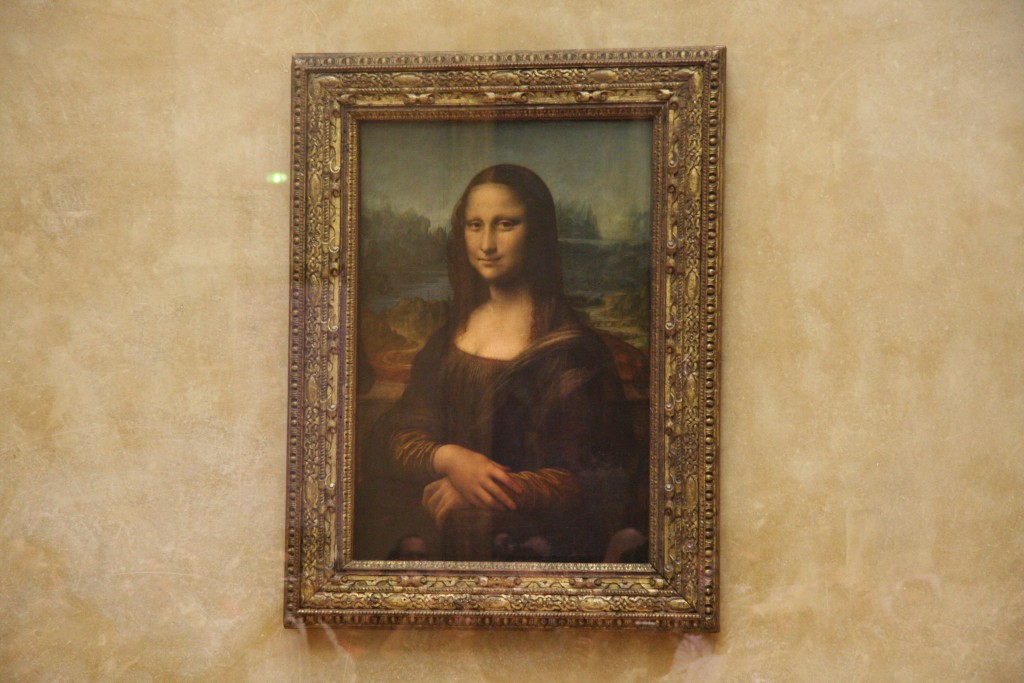
Benito Mussolini
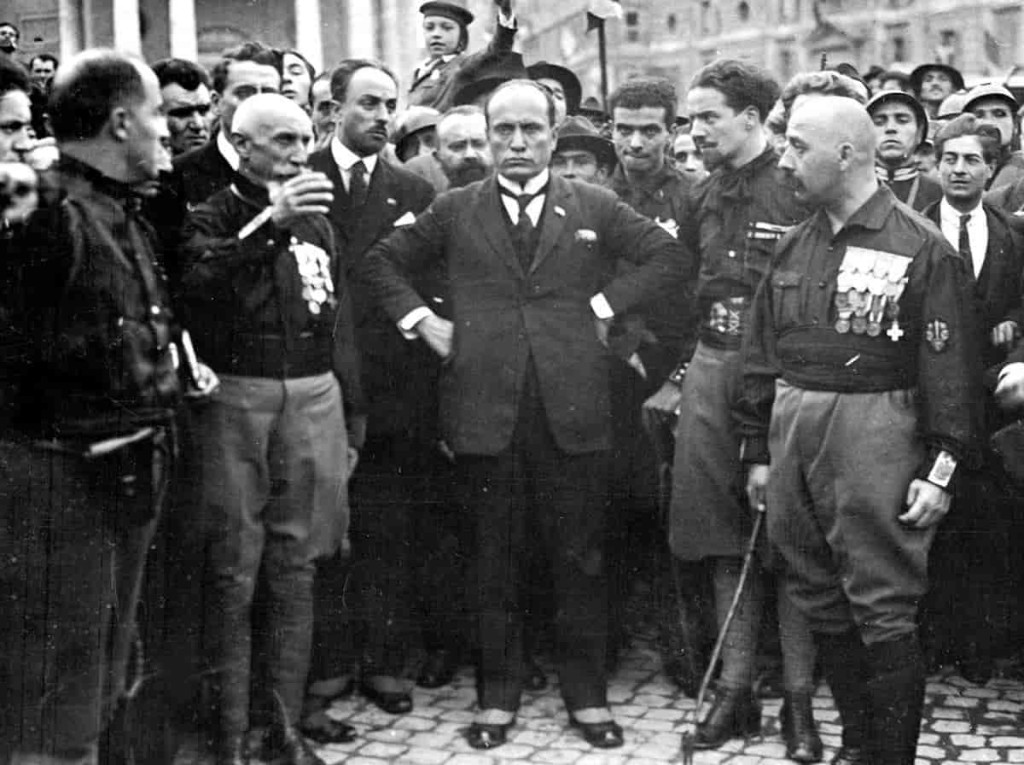
Italy is not only known for its beautiful weather and delicious food. Mussolini, the famous Italian leader and tyrant who ruled the country throughout World War II serves as an excellent example. Initially aligning himself with socialist ideology, he subsequently established the political movement of fascism in Italy and forged a contract with Adolf Hitler, committing to provide military assistance throughout the conflict. In the year 1945, Benito Mussolini was subjected to a public execution.
The Mafia
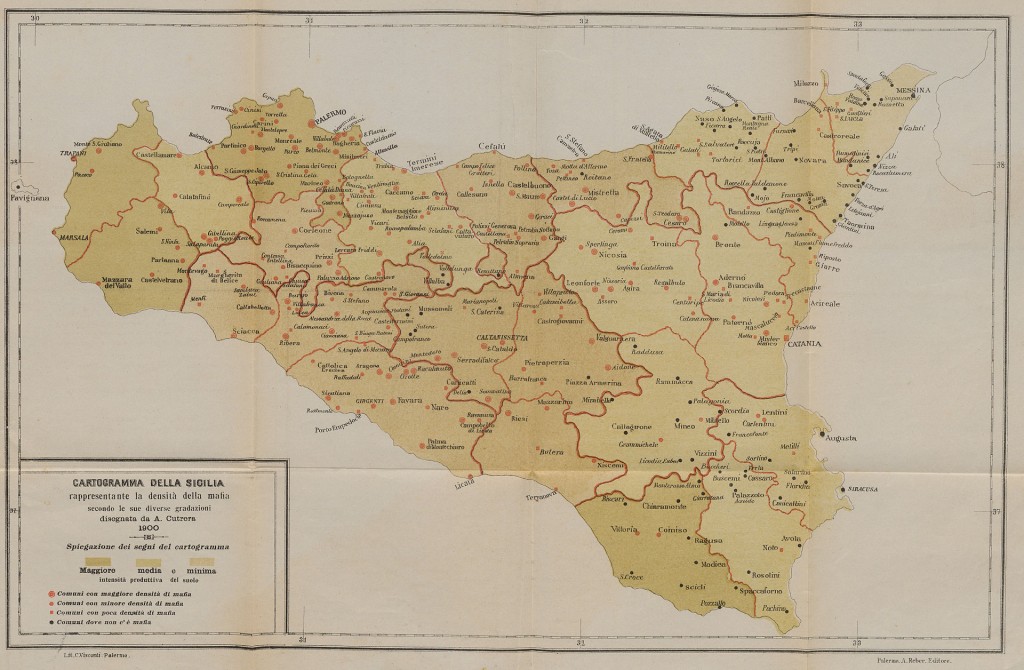
This criminal gang originated in Sicily during the nineteenth century. Sicily was ruled by a succession of conquerors until the middle of the 19th century, driving the locals to band together and impose their brand of justice. After Benito Mussolini’s rise to power in the 1920s, many Italians sought refuge in the mafia in the United States. The legendary Mafia of Italy is one of the most interesting features of Italian culture.
Conclusion
With our detailed guide, now you know so much about Italy and what makes this country famous. There is so much to see over here and you will never feel bored because of the happy and fun vibe that surrounds the country. You’ll end up having more fun than you would expect. For advice on travel, read our extensive “Travel Tips”.
What is Italy Known For? - FAQs
Italy is renowned for its rich artistic heritage, having produced iconic artists like Leonardo da Vinci, Michelangelo, and Raphael. It’s also famous for its architecture, including landmarks like the Colosseum, the Leaning Tower of Pisa, and the Vatican City’s St. Peter’s Basilica.
Italy’s culinary delights are celebrated worldwide, with dishes like pasta, pizza, and gelato being cherished favorites. The country is also known for its high-quality olive oil, wine, and cheeses, making Italian cuisine a global culinary delight.
Italy is a global fashion capital, with cities like Milan being at the forefront of international fashion trends. Italian designers like Giorgio Armani, Versace, and Prada are synonymous with luxury and elegance.
Italy’s architectural achievements have had a lasting impact globally. The concept of Renaissance-inspired urban planning, such as the grid system, was developed in Italy. The city of Venice, with its unique canal-based layout, remains a testament to Italy’s innovative approach to urban design.
 Reviewed by
Reviewed by 



